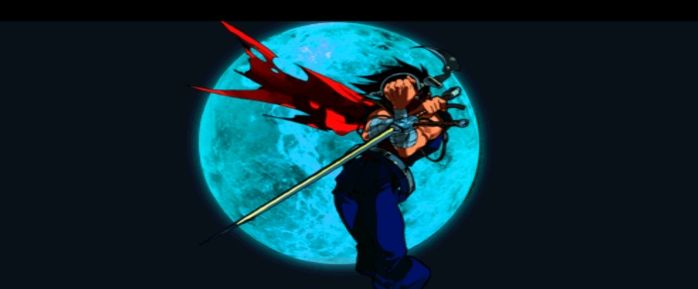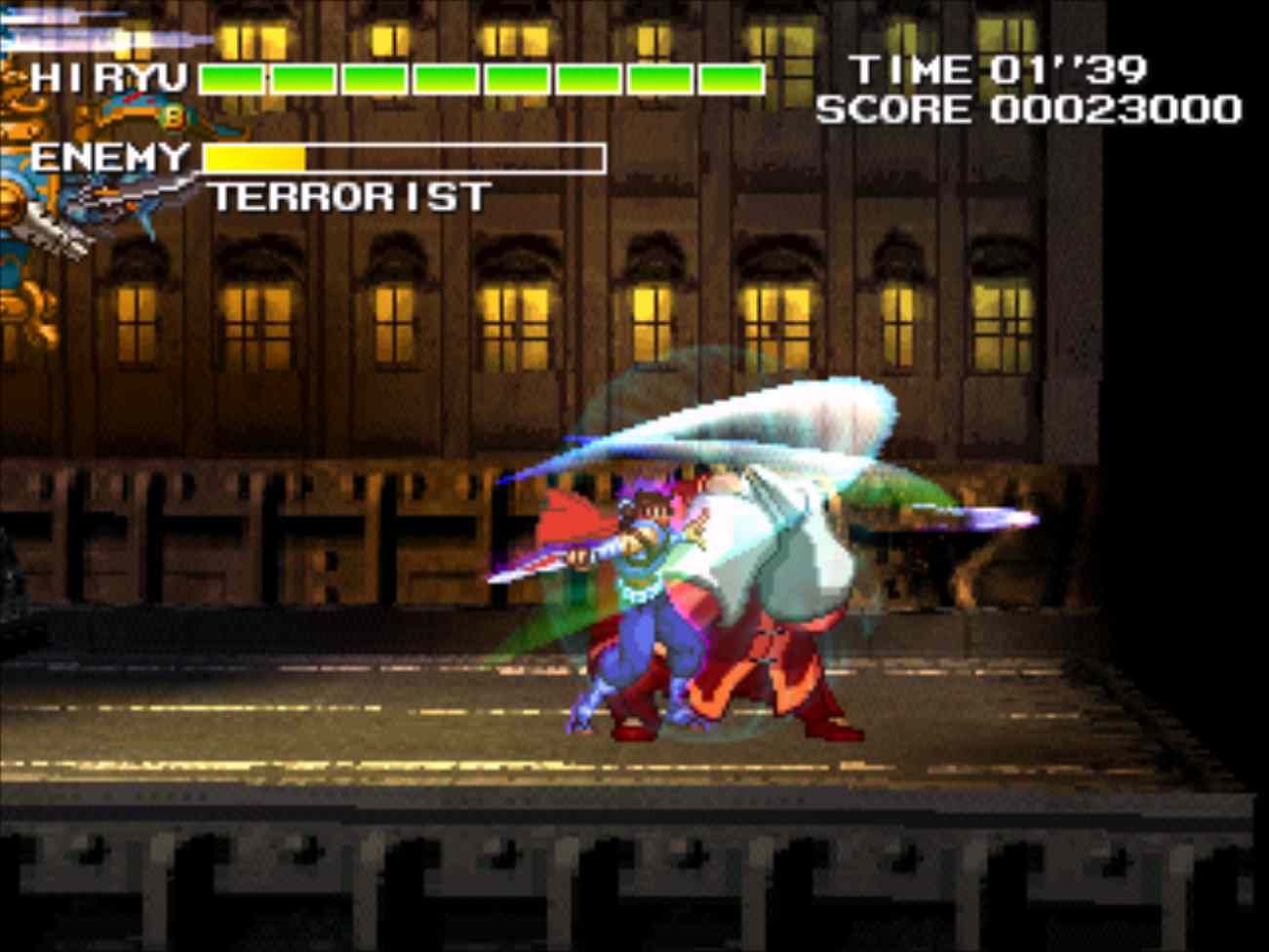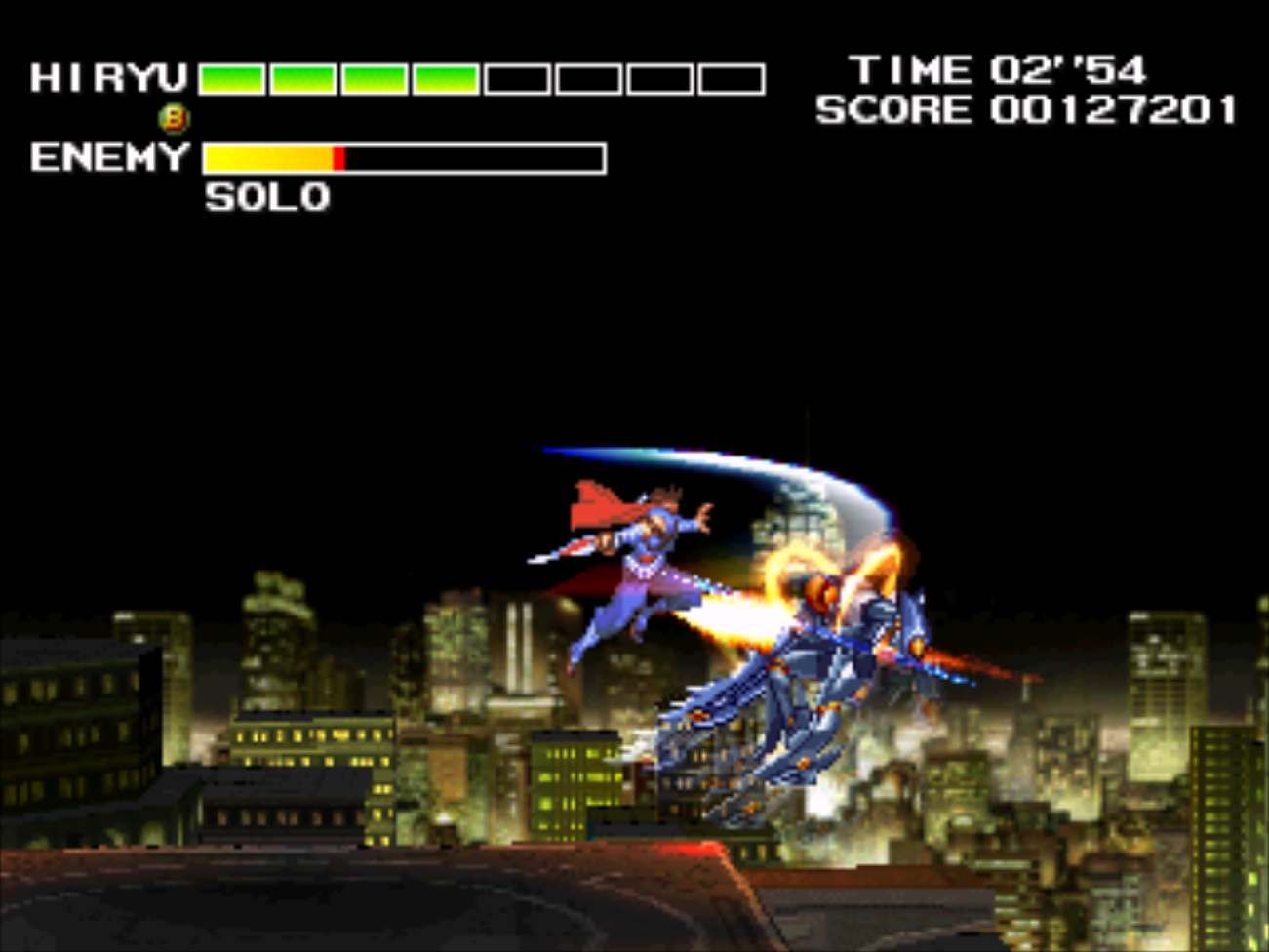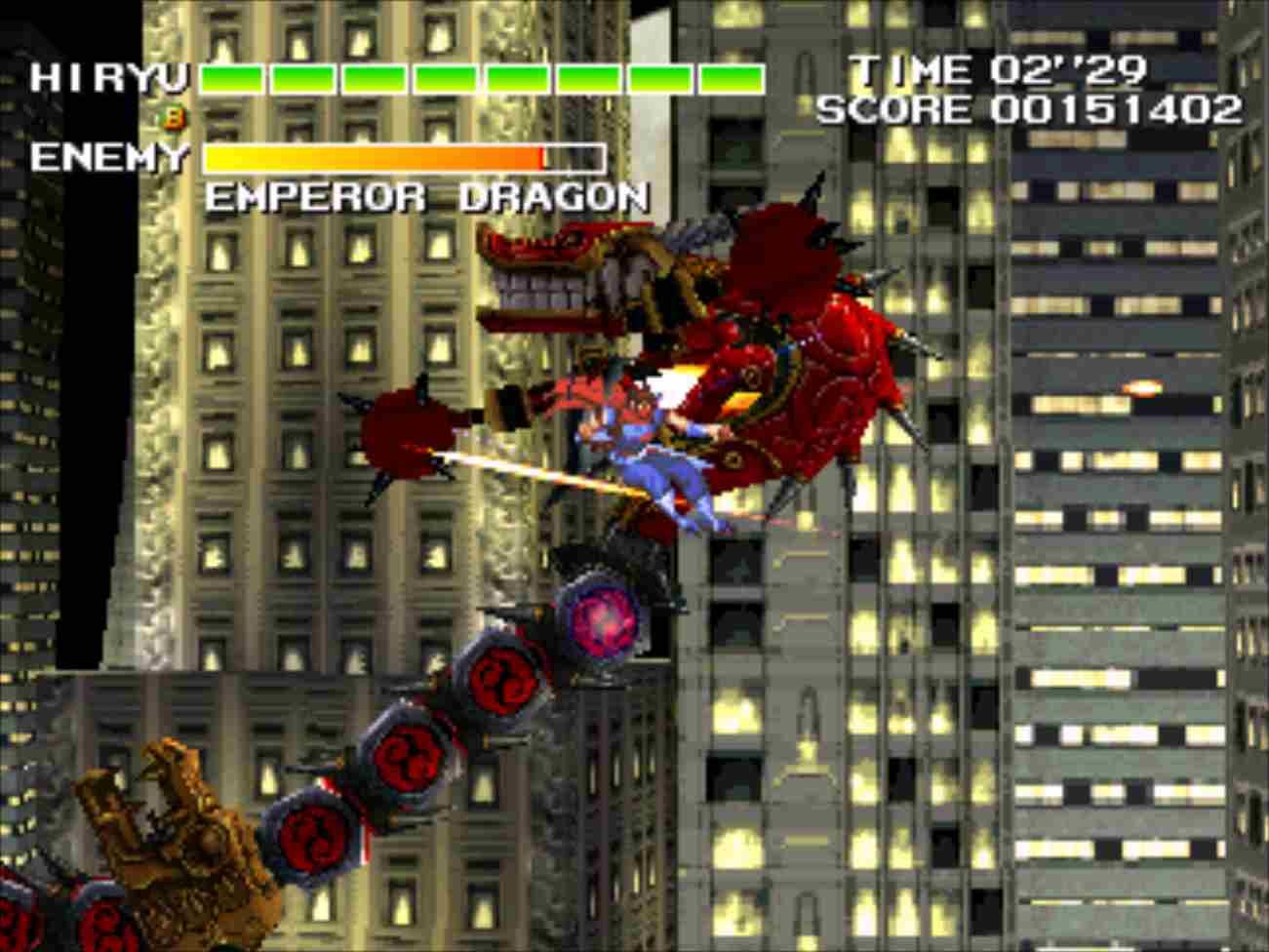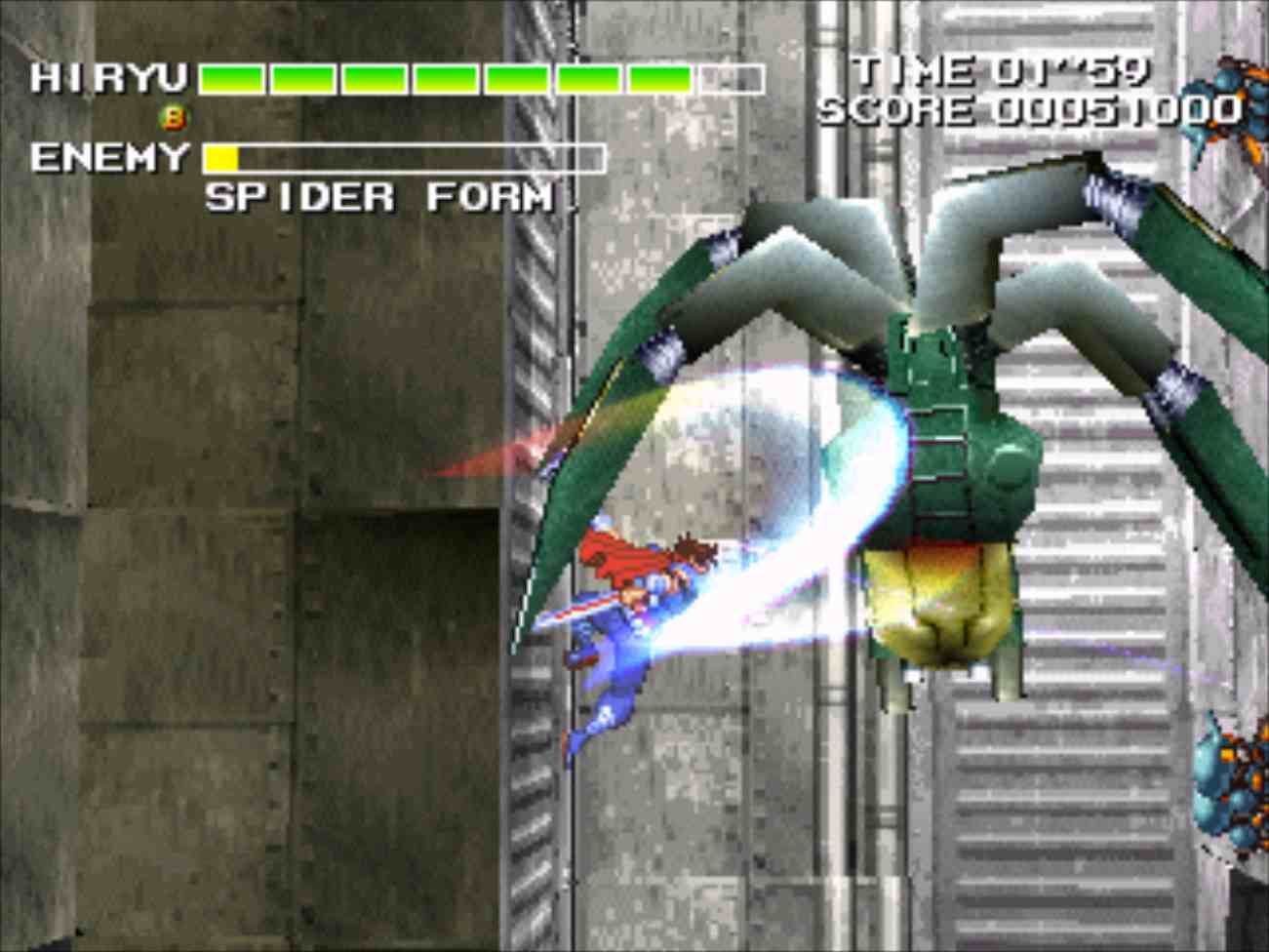Watch your step, for you’ve just entered the Graveyard. Inside, we’ll be digging up games that have long been without a pulse. You’ll see both good and bad souls unearthed every month as we search through the more… forgotten…parts of history.
The original Strider was an arcade hit and one of the Sega Genesis' early games that showed the hardware could handle arcade-centric games better than anything on the market. The franchise hit a rough patch thanks to Capcom licensing it out to US Gold and that being used for the dreadful Strider Returns, but was put back on track thanks to a PS1 and arcade game in Strider 2. The last game in the series before the 2014 reboot that we loved, this came out at an interesting time for Capcom and the industry as a whole. 2D side-scrolling games were seen as old hat by some, even with games like the now-iconic Castlevania: Symphony of the Night showing how great they could be. Arcades were in the midst of their final boom periods in the US and side-scrollers hadn't been a big deal since the rise of one-on-one fighters in the early '90s.
Strider 2 had to find a way to impress players right away and did that with polygonal backgrounds and sprite art being used for characters to create a unique visual style that's still unlike anything we have seen since. Strider 2, like the original, blended in traditional action-platforming with a surprising amount of acrobatics -- enabling things like mid-air flips and the ability to hook onto surfaces overhead. In a lot of ways, it feels like what we would now view as modern-day parkour platforming - only done thirty years ago in the case of the original game. Strider 2 takes things a step further by increasing the pace of the action with more enemies alongside dashing with a double-tap -- making movement as a whole feel more natural.
Movement in the original game was fluid for its time, but the lack of a dash and usage of somewhat stilted animation hurt things. The sequel added in a lot of detail to the animation and a far more diverse lineup of stages. The switch from a futuristic-Russia to a more general cyberpunk futuristic setting had done wonders to freshen up the look of the environments. Strider Hiryu will be able to slice and dice foes indoors, outdoors and even at night time on a series of aerial taxis in a section that perfectly evokes The Fifth Element.
The bump in pacing doesn't result in any framerate issues either, and stages are more frantic than ever before. Levels are more self-contained individual screens with some scrolling while retaining the idea of a single level's goal. It's an interesting way to do things because in execution it feels like an early '80s arcade game like Hagemaru, only with a much grander scale and a lot more action on display. It's a different way to executing the core Strider formula and something that helped it stand out even more compared to anything on the market because there was nothing else doing that on the market then and it's surprising that this micro-stage format hasn't been used in other games in the modern era.
It's an interesting way to segment the game up because it allows for elaborate stage designs in terms of geometry, without being all that taxing on hardware. Even for a PS1 game, load times are minimal between stages and little things like splash screens showing either the logo of the game or your last frame within the prior screen help keep something going at all times to help hide this. It's similar to SOTN's CD hallways, but less interactive and more visually interesting. It makes it more fun to focus on closing a stage out in a cool-looking way too since you can see it repeated and it can result in appreciating the visuals more since you'll mentally focus on that last frame more seeing it for a longer period of time.
One thing that came through playing the game again was how ahead of its time Strider 2 was with large-scale boss battles. Sub-bosses are common, but larger bosses pose a challenge and one that stood out with a giant red dragon that Hiryu scales throughout the battle in order to attack the head. 16 years after Shadow of the Colossus, it feels similar to that kind of game -- only years ahead and from a 2D perspective. It's impressive to see just how well the scale is represented too, with the dragon looking massive thanks to taking up so much screen real estate. Despite having large enemies, Strider 2 remains one of the most user-friendly action-platformers on the market.
Beyond having infinite continues, continues restart the player right from where they were at with enemy damage retained. There's also an option to turn on auto-fire so that a single button press acts as several when held down - greatly cutting back on repetitive button presses. This greatly tips the scales in the favor of the player, but everything can be scaled-back in that regard as well. You can turn off all the buffs to keep the experience more traditional and having more options for players is never a bad thing as it allows more players to enjoy the experience from start to finish. It's fantastic for those with arthritis who still want to play the game or for those wanting a quick game to play through to brush up on skills. Having everything scale so easily is even more impressive given how few games scale their difficulty like this even in 2022.
Visually, Capcom did a lot to make Strider 2 great in its time and it's held up well for the most part. There's still PS1-favorite polygon warping on environments, but when playing on a PS3 with smoothing turned on, things look fantastic. Movement animation is smooth and manages to not be too slick as to slow the action down, while the world itself looks dystopian and feels imposing. There's a nice visual contrast between Hiryu's blue and red outfit and most of the world too, which makes it easy to see him against everything else in the game. It's a small thing, but it ensures that you'll never blend into the background and that's been an issue for platformers.
Strider 2's weakest point is its soundtrack, which is good but falls well short of the incredible OST of the original. The PS1 original release included the arcade version of Strider as well, which only served to highlight the difference in quality. Amusingly, the games were printed on the wrong discs -- so Strider 2 is on the Strider 1 disc and vice versa. The sound effect work is top-shelf in Strider 2 as is the sound design as a whole. The metal clang of indoor areas adds a layer of fear to things, while the crack of wind outdoors helps it feel like you're fighting the elements alongside enemies in outdoor battles.
Strider 2 may not be getting any modern-day re-releases, but it is still easily purchasable on a PS3 and playable on the PSP as well. The physical version for PS1 is still the best way to play it on the PS3 as that lets you play both disc-based games on the console. Hopefully, it'll get a modern-day release one day as part of a full-on Strider collection -- which should be playable on pretty much anything now since even the 2013 Strider was playable on Xbox 360/PS3 hardware. It's very much an unsung sleeper hit in the series and a game that deserves to be played by more people.

